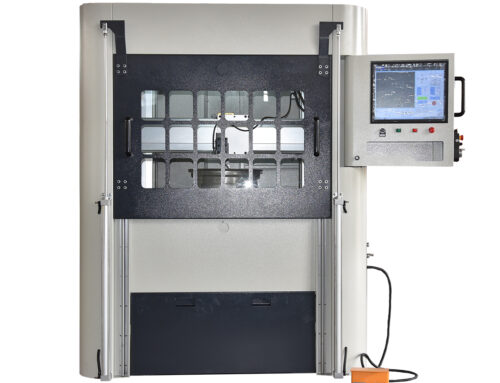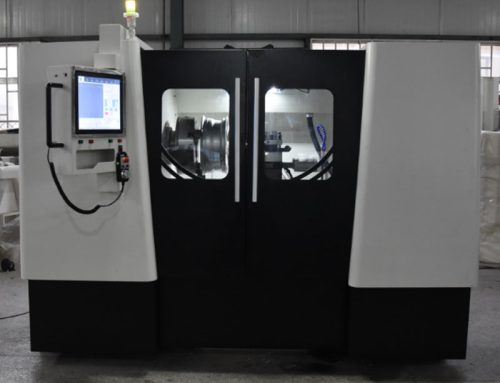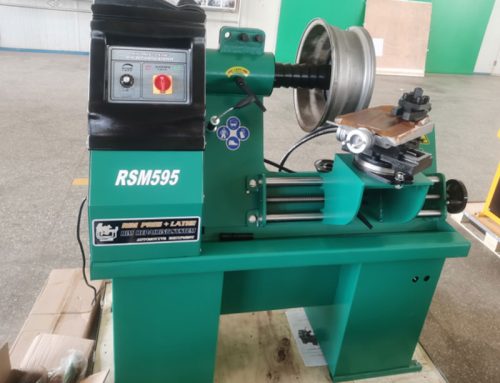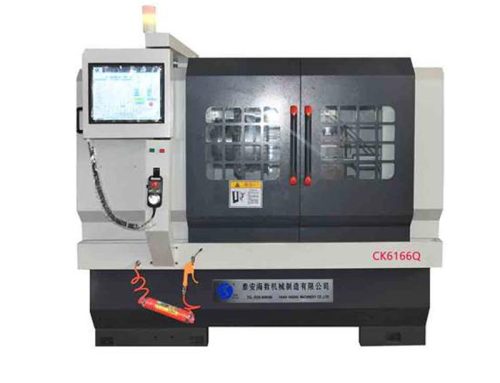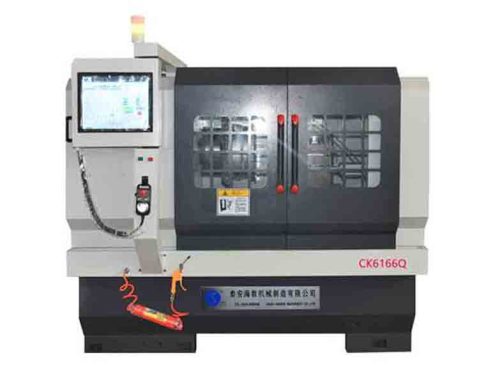The wheel reconditioning lathe is an essential machine in the automotive repair industry. Now, let me share a real-life case study from our own experience.
Jack, a customer from the UK, came across our official website and learned that we are a professional manufacturer of wheel repair lathes. He shared his requirements, mentioning that he owns an automotive repair shop in the UK. He wanted to expand his automotive repair business by offering wheel reconditioning services for 16-22-inch car rims. However, he admited that he lacks expertise in this area and hopeed that we can recommend a Wheel reconditioning lathe for him.
After listening to Jack’s description, we asked him several questions regarding his requirements including motor power, operating voltage, operation mode, packaging, transportation, training, and other aspects. Jack mentioned that he was interested in our recommendation for a Wheel reconditioning lathe, so we introduced him to a cost-effective option: the CK6160Q model is a wheel repair machine.
Wheel Reconditioning Lathe Designed for UK Partner
Based on our assessment, considering the customer’s wheel size ranging from 19 to 22 inches, opting for a higher motor power would not only increase the cost but also result in higher electricity consumption, wasting resources and money for the customer. Therefore, we recommended the customer utilize a 4 kW main motor power, which was sufficient for their needs.
A 4kW main motor power offers a high power output, providing ample power and driving force to handle various types of wheel reconditioning tasks. Whether it’s wheel repair, refurbishment, or other operations, the high-power main motor can efficiently accomplish the work, enhancing the lathe’s processing capacity and efficiency. Additionally, the 4 kW motor has a compact installation size, saving space and optimizing space utilization for the customer, both in terms of installation and footprint.
After explaining our reasoning to the customer, they found it to be highly reasonable and agreed with our recommendation.
Next, let’s consider the operating voltage. Based on our production and sales experience, the majority of customers in the UK require a working voltage of 220V-240V. We can provide this customized voltage for the customer. The standard power supply in the UK is 230 volts, 50-hertz alternating current. Offering customized voltage ensures that the equipment matches the local power network and meets the standard voltage requirements in the UK. This helps ensure the smooth operation of the equipment and avoids electrical issues or equipment failures caused by voltage mismatch.
Providing equipment with customized voltage allows for direct connection to the UK power network without the need for additional voltage converters or adapters. This simplifies the installation and usage process, reducing additional costs and hassle for the customer. They won’t have to separately purchase and install voltage converters or adapters. Using customized voltage that matches the local power network reduces the risk of electrical failures. Mismatched voltage can lead to overload, electrical damage, or equipment malfunctions. Providing customized voltage helps mitigate these risks and ensures that the equipment operates within a safe voltage range.
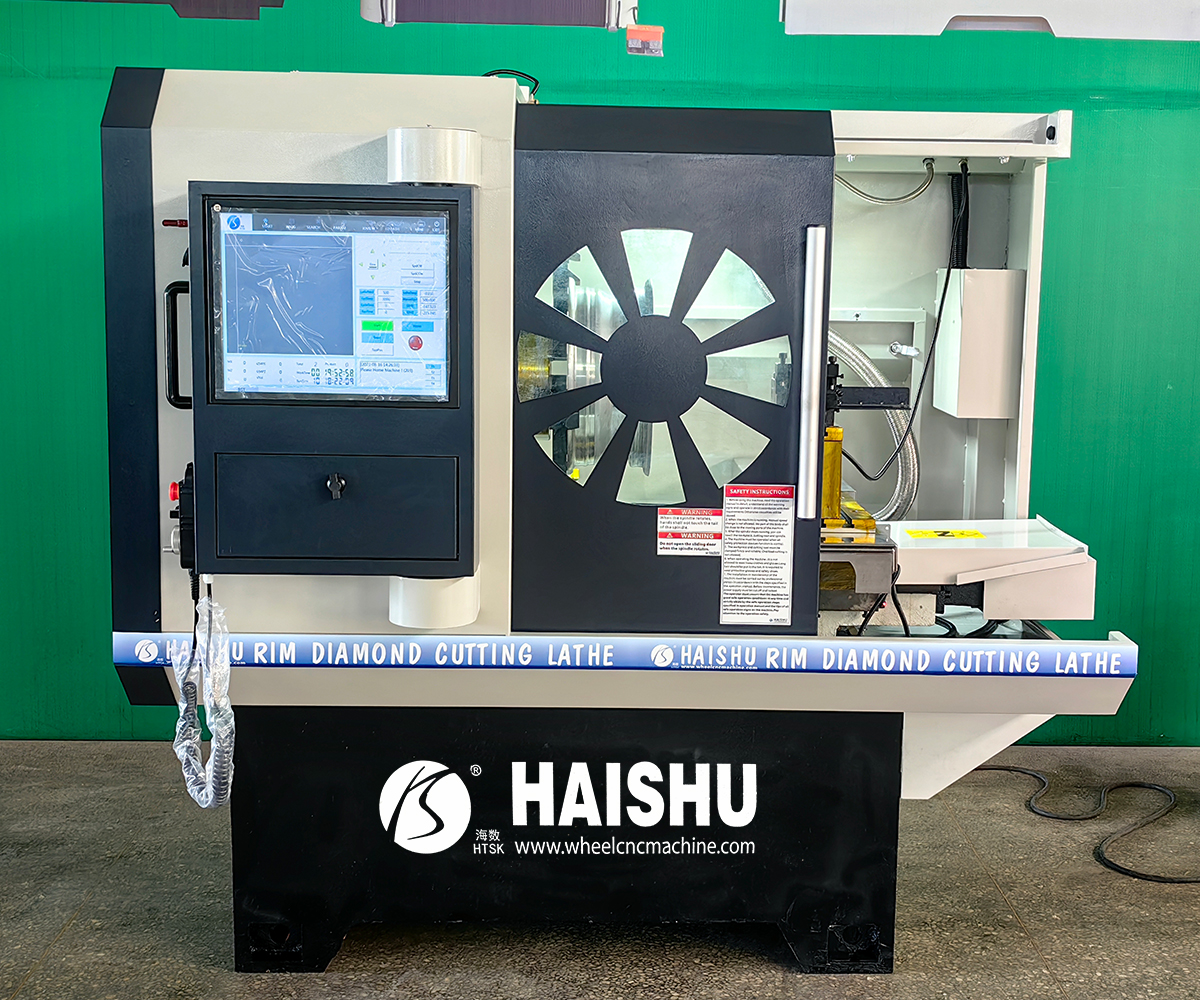
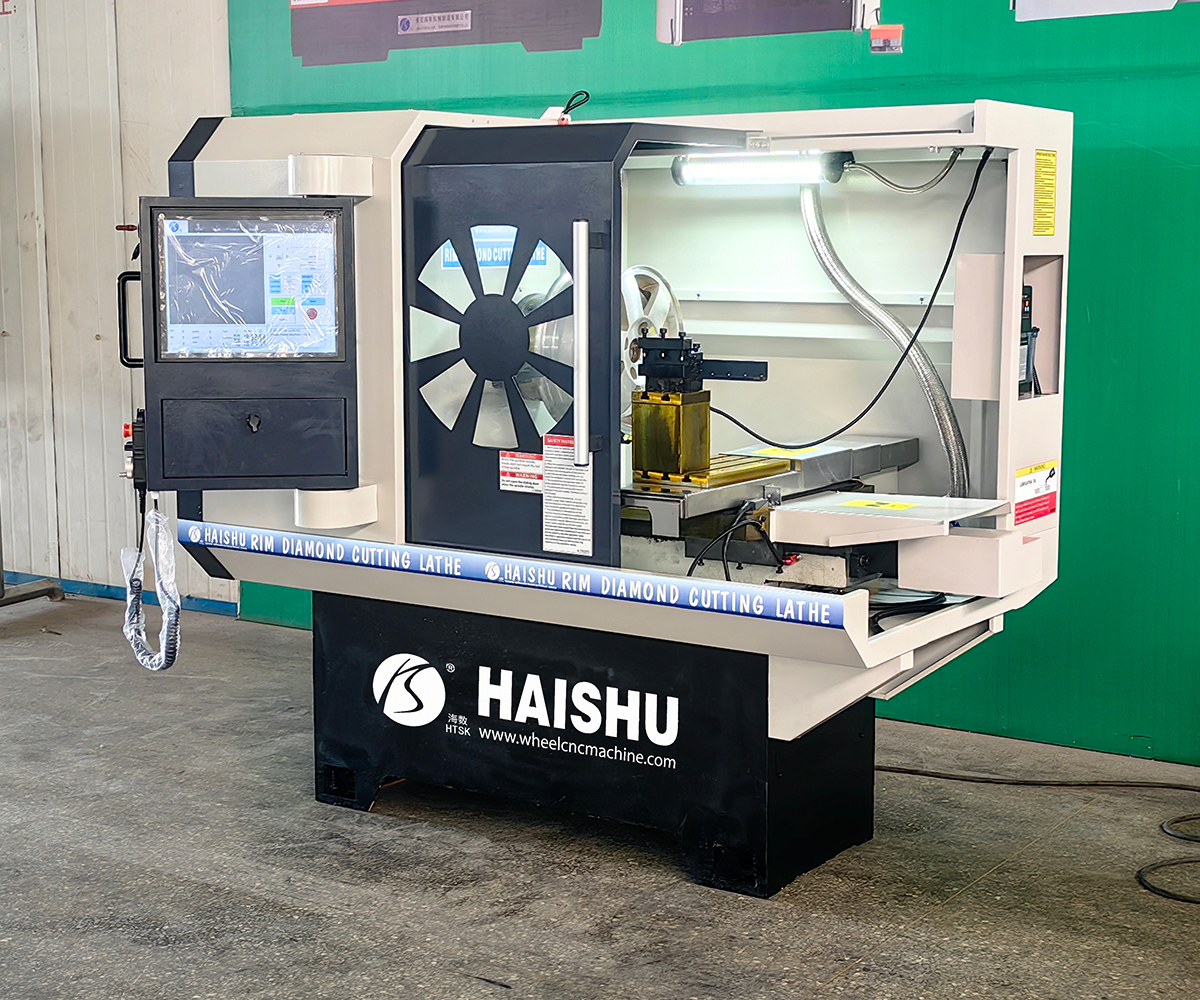
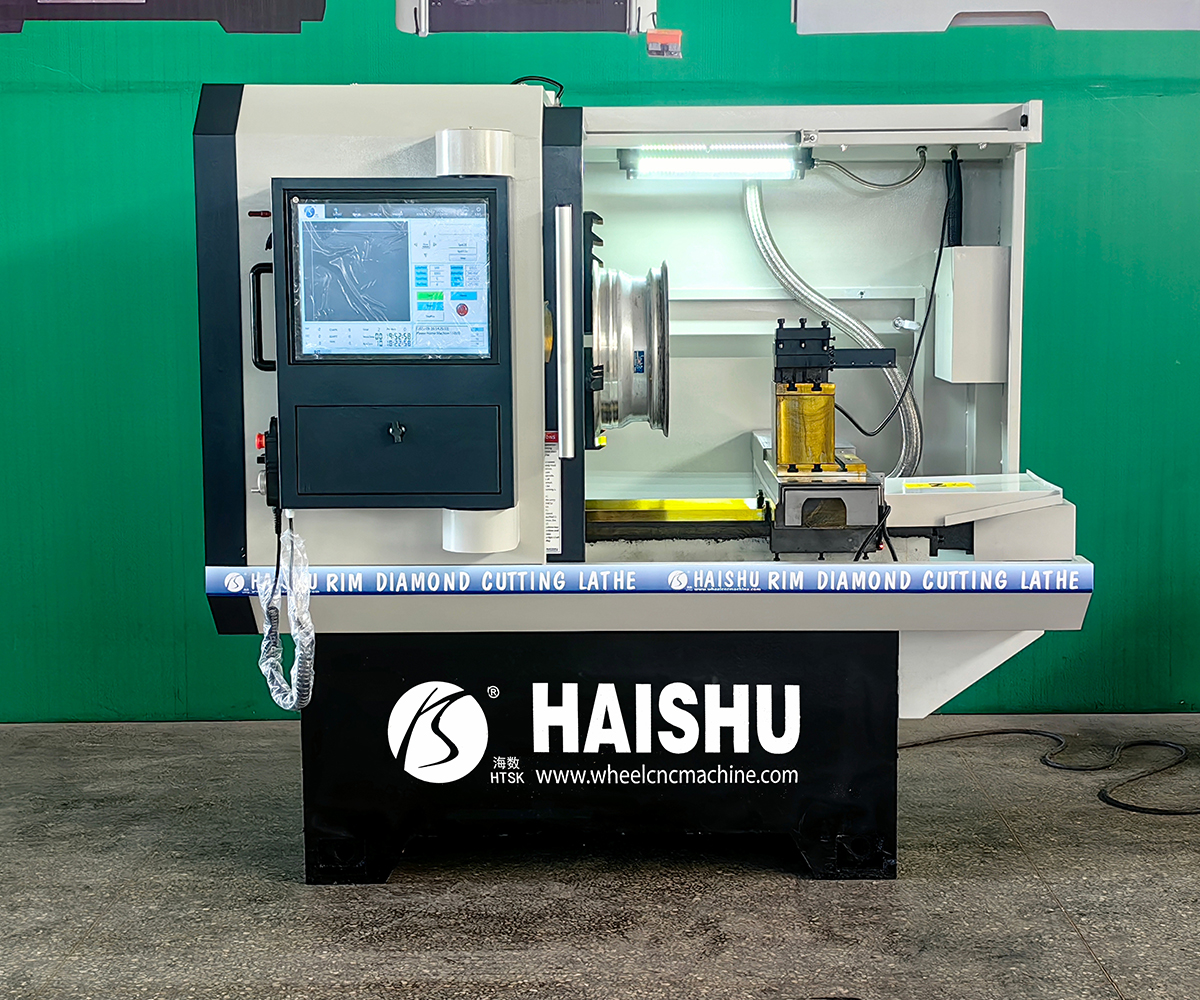
Ultimate Wheel Reconditioning Lathe Solution
Jack also raised concerns about the operation of the wheel reconditioning lathe since he lacks prior experience in using such equipment. He requested an explanation from us. In response to his concerns, we have detailed solutions available.
Detailed operation videos: Providing comprehensive operation videos specifically for the wheel reconditioning lathe can help customers understand the equipment’s usage methods and steps. The videos can demonstrate various operation scenarios and techniques, showcasing how to correctly set and adjust lathe parameters and perform different types of wheel reconditioning tasks. Through the combination of visuals and audio, the operation videos can convey operational details more intuitively, aiding customers in mastering the techniques.
Electronic instructional manuals: Offering electronic instructional manuals can supplement the operation videos by providing detailed operational guidance in the form of text and images. The manuals can include explanations of the equipment’s components, functions, and features, as well as detailed instructions for each operational step. Customers can refer to the manuals as needed to review processes, understand principles, and troubleshoot issues.
Phone guidance: Providing phone guidance means that customers can directly communicate with our technical support personnel to have their questions answered and issues resolved. Through phone conversations, our technical support personnel can provide real-time feedback and guidance tailored to the customer’s specific circumstances and needs. Phone guidance helps in quickly resolving problems and offering real-time support and advice.
Video conferencing: Through video conferencing, our technical support personnel can remotely connect with customers, visually observe equipment operations, and provide guidance in real-time. This service can be facilitated through various video communication platforms such as Skype, Zoom, etc. Through video conferencing, our technical support personnel can gain a more direct understanding of customer concerns and questions, delivering real-time demonstrations and solutions.
On-site training: On-site training is a highly personalized service where our technical support personnel visit the customer’s location to provide training. This training can be customized based on the customer’s needs and the specific characteristics of the equipment. Our technical support personnel can conduct on-site demonstrations, offer operational guidance, and facilitate practical application exercises to ensure that customers can use and operate the wheel reconditioning lathe correctly. On-site training provides deeper interaction and hands-on experience, accelerating customer learning and skill development.
After addressing Jack’s concerns about the operation, he felt that we were professional. Another concern he raised was related to the transportation process and the potential for damage during the long journey, considering his past experience with damaged products during delivery. We provided an explanation to address this concern.
To ensure the safety of the equipment, we have implemented the following measures:
Specialized export packaging with fumigation-free materials: This packaging is designed to comply with international trade regulations and standards, eliminating the need for cumbersome fumigation procedures in the destination country. It ensures the equipment’s compliance and smooth transportation during international shipping, saving time and effort.
By utilizing specialized export packaging materials that meet international standards, we minimize the risk of damage during transportation. These packaging materials provide enhanced protection against impacts, vibrations, and other potential hazards during transit.
We reassured Jack that we prioritize the safe delivery of our equipment and take all necessary precautions to minimize the likelihood of damage during transportation. This includes working closely with reliable shipping partners who have expertise in handling delicate and valuable machinery.
Wooden beams with dimensions of 7cm or more: The packaging includes wooden beams with dimensions of 7cm or more, ensuring structural strength and stability. The larger size of the wooden beams provides better support and protection, resisting vibrations and impacts during transportation.
Bolt fastening with oversized washers: Each connection point is secured with bolt fastening and oversized washers. This design prevents bolts from detaching from the wooden beams, ensuring the stability of the packaging. The oversized washers offer larger contact areas, evenly distribute pressure, reduce stress between the bolts and wooden beams, and further ensure reliable fastening.
Steel strapping for outer packaging: The outer packaging is secured with steel strapping to increase overall stability and safety. Steel strapping provides high strength and durability, effectively resisting external pressure and impacts that the packaging may encounter during transportation.
Transportation to the port using dedicated vehicles: To ensure the safe transportation of the equipment, we will use dedicated transportation vehicles to deliver the wheel reconditioning lathe to the port. This dedicated transportation ensures better control and protection, reducing potential risks during transportation.
Wooden wedges and steel wire rope fastening inside the container: After loading into the container, we will further secure the equipment using wooden wedges and steel wire ropes. Wooden wedges fill and secure the gaps between the equipment and the container, preventing movement during transportation. Steel wire ropes are used for additional fastening, tying, and securing the equipment, ensuring its stable position inside the container.
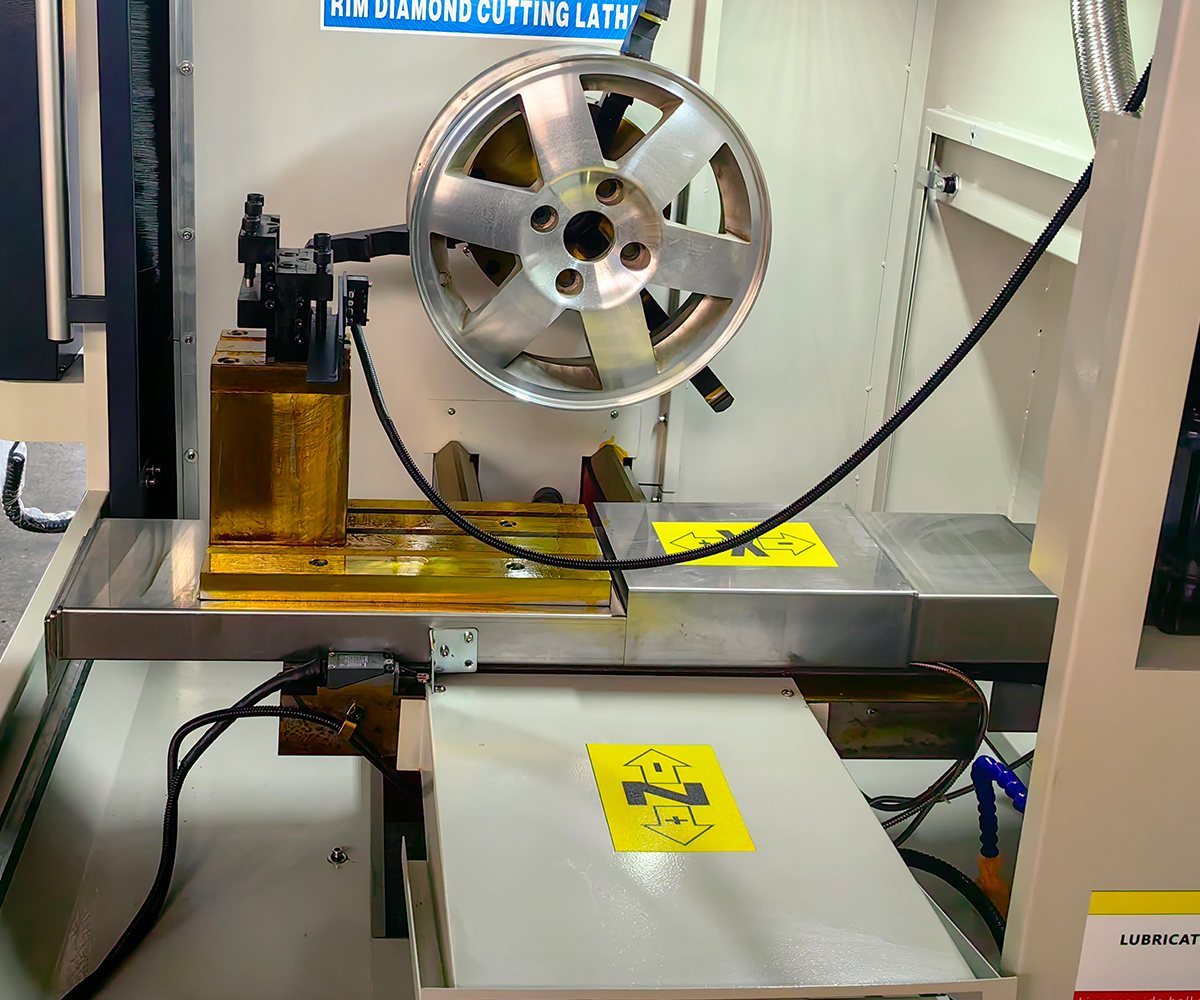
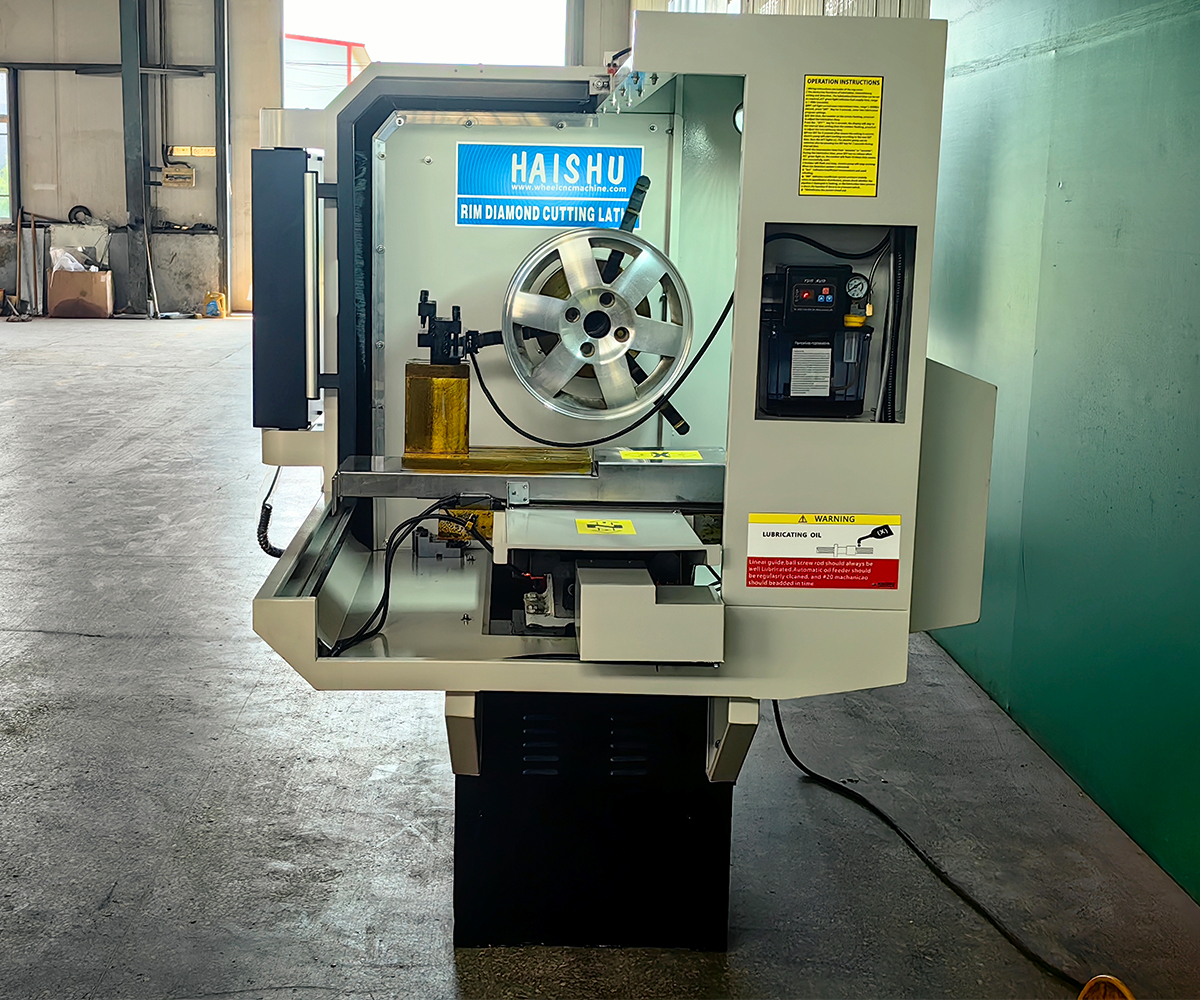
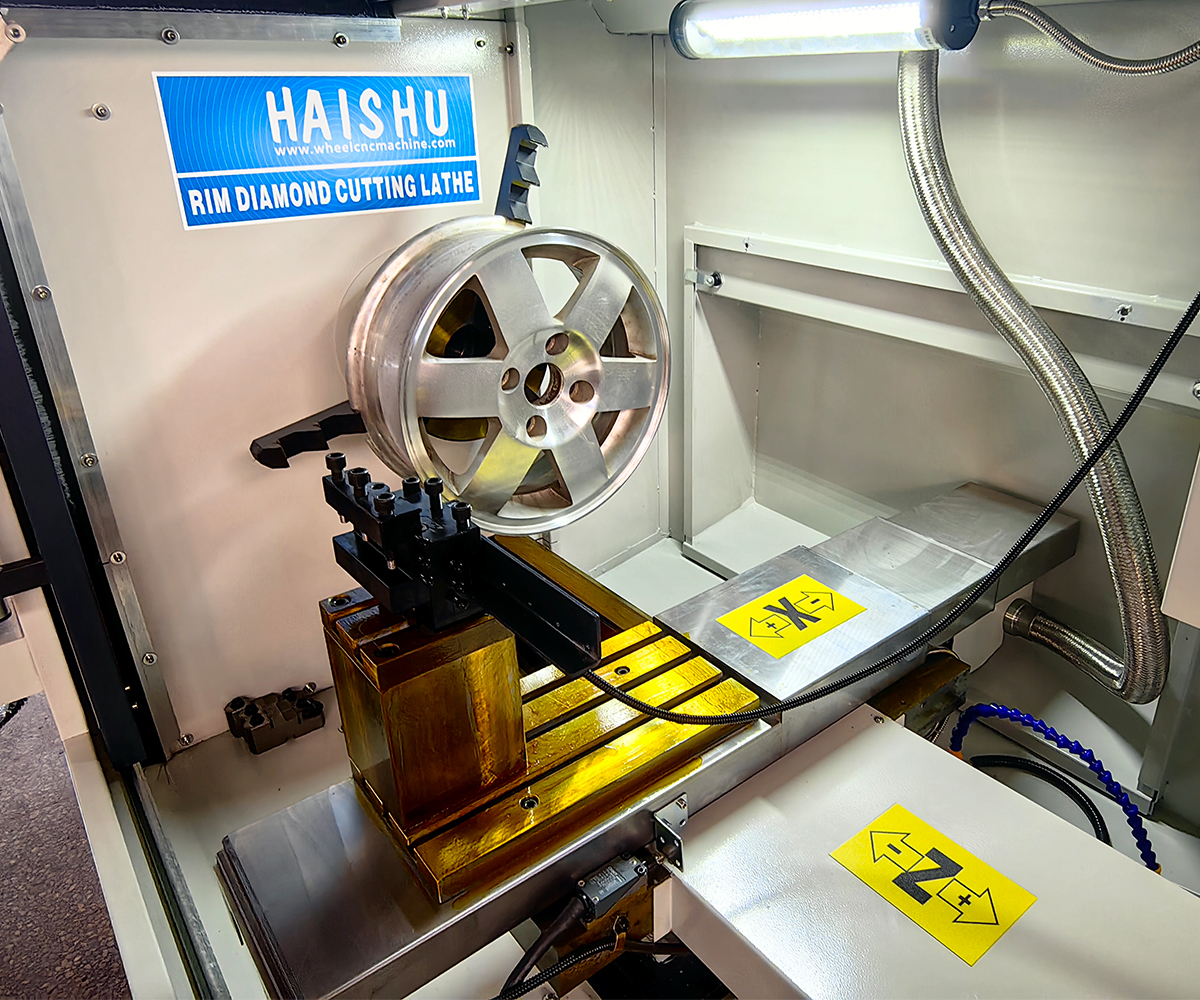
Jack is a cautious and meticulous individual, and he also inquired about the maintenance and repair of the machine tool. We provided him with several explanations. Firstly, the automatic lubrication system: The wheel reconditioning lathe is equipped with an automatic lubrication system, which provides necessary lubrication to the lathe at regular intervals. This system utilizes specially designed lubrication devices that automatically dispense the appropriate amount of lubricant to critical components such as bearings and transmission systems. The automatic lubrication system ensures that the equipment receives proper lubrication continuously during operation, enhancing the efficiency and lifespan of the wheel reconditioning lathe.
Manual lubrication: In addition to the automatic lubrication system, our wheel reconditioning lathe also offers a manual lubrication option. This allows operators to manually apply lubricant to bearings and other components as needed. Manual lubrication enables operators to have more flexibility in controlling and adjusting the amount and frequency of lubricant application to suit specific working environments and requirements.
Aviation-grade lubricating grease: To ensure proper lubrication of the bearings, our wheel reconditioning lathe utilizes aviation-grade lubricating grease. This high-quality grease possesses excellent anti-wear properties and high-temperature resistance, effectively reducing friction and wear and extending the lifespan of the bearings. The use of aviation-grade lubricating grease ensures the reliability and stability of the wheel reconditioning lathe under high loads and harsh operating conditions.
Protective covers for transmission lead screws: To safeguard the bearings of the transmission lead screws, we have installed protective covers on the wheel reconditioning lathe. These protective covers prevent dirt, dust, and other impurities from entering the lead screw bearings, thereby reducing the risk of friction and damage. The protective covers effectively prolong the lifespan of the lead screw bearings and enhance the reliability and stability of the equipment.
After gaining an understanding of the maintenance and care knowledge regarding the wheel reconditioning lathe, Jack posed the most sensitive question: the budget. He wanted to know how much it would cost to purchase the wheel reconditioning lathe. In terms of the budget, we provided the customer with the following explanations:
We offer different configurations and performance levels of wheel reconditioning lathes based on equipment type and scale, and we explained the price differences between them. Additionally, we discussed the impact of technology and features on equipment performance and pricing. We also introduced the characteristics, reputation, and quality levels of each brand to the customer.
In addition to the price, Jack should consider the support in terms of after-sales service and warranty. Alongside the price of the wheel reconditioning lathe itself, he should also factor in possible additional costs and transportation expenses, such as installation fees, training fees, transportation, and insurance costs. We provided this information transparently to the customer, enabling Jack to have a comprehensive understanding of the total cost of the purchase.
Based on his requirements, we provided Jack with a price quotation that aligns with his budget.
Please note that the translation has been optimized for SEO without explicitly listing the points.
After thorough explanations and video inspections, considering various factors, and evaluating multiple brands, Jack finally signed a purchase contract with us. Within a span of 15 days from contract signing, we successfully completed the customized production of the wheel reconditioning lathe. Upon completion, we invited Jack for on-site acceptance and inspection, which left him deeply impressed by our professionalism.
About Haishu Machinery
After conveying this information, our intention is to provide reference information for users who have not yet purchased or are considering purchasing a wheel reconditioning lathe. We aim to ensure that every customer has more experience and knowledge when buying a wheel reconditioning lathe. Additionally, we would like to express that Tai’an Haishu Machinery Co., Ltd. is a professional manufacturer specializing in the production, design, and customization of wheel reconditioning lathes. We are a wheel lathe manufacturer with independent brands, offering high-quality service, reliable quality, and options that fit customers’ budgets. We welcome you to visit our company for on-site tours and guidance.
